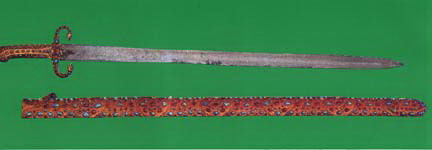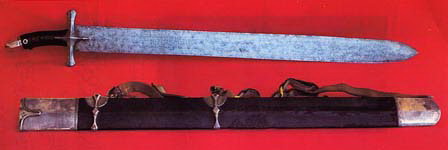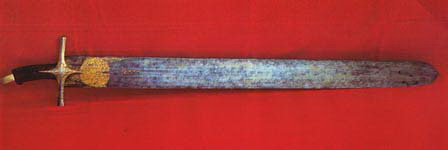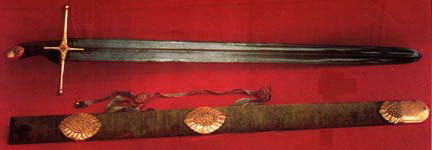Cave: is any natural basement rocks are quite accessible in humans. (Union Internationale de Speleologie).
Cave: natural hole in the earth. (William B. White, 1988)
Some references to review the processes of the cave, including:
Geomorphology and Hydrology of Karst terrains (William B. White, 1988)
Characteristics of karst landform in the region are:
- Formed by a closed negative, with various sizes and composition
- An unbroken surface drainage
- The caves and subsurface flow system
Level of development of karst landform region, in general differ from one region to another. Mouth of the cave formed by chance.
Some forms associated with water source or place of discharge of water which also form a cave. For example in the form of the mouth of the cave mouth swallow holes or springs.
Most of the mouth of the cave formed by downcutting of the valley that cuts the surface of the cave passage.
Others are formed by a complex process: Upward stopping of cave passage, sinkhole collapse, or the intersection of the vertical shaft with a tunnel cave.
Swallow hole: this sense is used to mark the spot where the flow of water disappeared into underground
Vertical shaft: in an ideal form, is a cylinder with a vertical wall against the inclination bedding bedding overhaul.
Collapse: debris
Karst Geomorphology and Hydrology (DC Ford & PW Williams, 1989)
The Science Of Speleology (GT Warwick. Geomorphology and cave)
Dome pit (page 100):
Caused by a solution that leads upwards, backed up by water flooding the chamber lipasan, formed along the main joint. (Renault, 1952 a and b).
(Maucci, 1952, 1958) calls it reverse erosion (erosion inverse).
Karst Landform (Marjorie M. Sweeting, 1972)
Factors that influence the formation of cave passage (133):
- A form of primary capillary
- Character petrological and chemical limestone
- The structure of limestone, such as dip, joint, and fault, etc.
- Type and amount of water flow passing through the hallway (phreatic or Vadose)
- Physiographic region
- Influence the development of the cave before, the history of the cave
- Climate and climate variations earlier periods
- Effect of cave deposits.
Cave collapse and breakdown:
- Block breakdown: The type of debris is usually short-dimensional for horizontal, inclined vertically, rise, rise toward the tension direction terrentang dome. The collapse of the roof or walls of caves on a large scale, marked by the ruins of a square-shaped block.
- Slab breakdown: The type of debris that is on a long-distance horizontal but vertical level are limited. Caused by the collapse of a single layer on the roof. Slice thickness irregularly scattered along the corridor cave.
- Plate breakdown: solution or loss caused by the pressure plate is thin limestones.
- Chip breakdown: in this case only a small fragment that collapsed, one-piece flat and flake-shaped fragments.
Identification of characterization of the mouth of the cave interpretation topographic maps, aerial photos:
- Flow pattern is broken, either periodically or stream flow all season. Shape: Swallow holes (the loss of watershed / water), resurgence (where the re-emergence of water flow to the surface, to the river, could spring (water sources / springs). Characteristic surface morphology: from topographic maps or aerial photographs that look disconnected river. To swallow holes, disappearing down the flow of water entering the soil surface through the opening. To resurgence and spring, the flow of water emerging from underground through the mouth of the cave.
- Scarp, escarpment. Form: resurgence, spring, fosile, characteristic morphology of the surface: the cliff due to fault.
- Pothole, shafts, domepit. Can be identified in the field, aerial photos. Forms: pitting holes, vertical slit. Surface morphological features: not necessarily.
- Closed depression (Uvala, cockpit, doline / sinkhole). Shape: karst valleys are covered
- Vegetation is more dense or with different plant species endemic to the surrounding vegetation.
- A bat, sriti birds, birds that nest or from one point to specific areas.
Identification of characterization of the mouth of the cave from a geological map:
- Lithology on the type of limestone clastic clastic nan
- Geological structure that looks real (Syncline, anticline)
- Muscular structure, layer, a regional fault.
Identification of characterization of the mouth of the cave from other people's information:
- Portrayal of what is called a "cave" to the person who asked for information - Understand the terms used a population of approximately (luweng, song, jumbleng, cave, cave, Guha, banners, leang, goffre, Grotte, cave, al kahf, shafts, etc.
Cave: natural hole in the earth. (William B. White, 1988)
Some references to review the processes of the cave, including:
Geomorphology and Hydrology of Karst terrains (William B. White, 1988)
Characteristics of karst landform in the region are:
- Formed by a closed negative, with various sizes and composition
- An unbroken surface drainage
- The caves and subsurface flow system
Level of development of karst landform region, in general differ from one region to another. Mouth of the cave formed by chance.
Some forms associated with water source or place of discharge of water which also form a cave. For example in the form of the mouth of the cave mouth swallow holes or springs.
Most of the mouth of the cave formed by downcutting of the valley that cuts the surface of the cave passage.
Others are formed by a complex process: Upward stopping of cave passage, sinkhole collapse, or the intersection of the vertical shaft with a tunnel cave.
Swallow hole: this sense is used to mark the spot where the flow of water disappeared into underground
Vertical shaft: in an ideal form, is a cylinder with a vertical wall against the inclination bedding bedding overhaul.
Collapse: debris
Karst Geomorphology and Hydrology (DC Ford & PW Williams, 1989)
The Science Of Speleology (GT Warwick. Geomorphology and cave)
Dome pit (page 100):
Caused by a solution that leads upwards, backed up by water flooding the chamber lipasan, formed along the main joint. (Renault, 1952 a and b).
(Maucci, 1952, 1958) calls it reverse erosion (erosion inverse).
Karst Landform (Marjorie M. Sweeting, 1972)
Factors that influence the formation of cave passage (133):
- A form of primary capillary
- Character petrological and chemical limestone
- The structure of limestone, such as dip, joint, and fault, etc.
- Type and amount of water flow passing through the hallway (phreatic or Vadose)
- Physiographic region
- Influence the development of the cave before, the history of the cave
- Climate and climate variations earlier periods
- Effect of cave deposits.
Cave collapse and breakdown:
- Block breakdown: The type of debris is usually short-dimensional for horizontal, inclined vertically, rise, rise toward the tension direction terrentang dome. The collapse of the roof or walls of caves on a large scale, marked by the ruins of a square-shaped block.
- Slab breakdown: The type of debris that is on a long-distance horizontal but vertical level are limited. Caused by the collapse of a single layer on the roof. Slice thickness irregularly scattered along the corridor cave.
- Plate breakdown: solution or loss caused by the pressure plate is thin limestones.
- Chip breakdown: in this case only a small fragment that collapsed, one-piece flat and flake-shaped fragments.
Identification of characterization of the mouth of the cave interpretation topographic maps, aerial photos:
- Flow pattern is broken, either periodically or stream flow all season. Shape: Swallow holes (the loss of watershed / water), resurgence (where the re-emergence of water flow to the surface, to the river, could spring (water sources / springs). Characteristic surface morphology: from topographic maps or aerial photographs that look disconnected river. To swallow holes, disappearing down the flow of water entering the soil surface through the opening. To resurgence and spring, the flow of water emerging from underground through the mouth of the cave.
- Scarp, escarpment. Form: resurgence, spring, fosile, characteristic morphology of the surface: the cliff due to fault.
- Pothole, shafts, domepit. Can be identified in the field, aerial photos. Forms: pitting holes, vertical slit. Surface morphological features: not necessarily.
- Closed depression (Uvala, cockpit, doline / sinkhole). Shape: karst valleys are covered
- Vegetation is more dense or with different plant species endemic to the surrounding vegetation.
- A bat, sriti birds, birds that nest or from one point to specific areas.
Identification of characterization of the mouth of the cave from a geological map:
- Lithology on the type of limestone clastic clastic nan
- Geological structure that looks real (Syncline, anticline)
- Muscular structure, layer, a regional fault.
Identification of characterization of the mouth of the cave from other people's information:
- Portrayal of what is called a "cave" to the person who asked for information - Understand the terms used a population of approximately (luweng, song, jumbleng, cave, cave, Guha, banners, leang, goffre, Grotte, cave, al kahf, shafts, etc.

























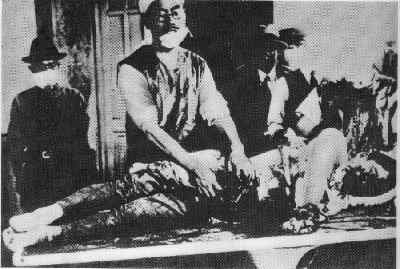











![[Image: 1.jpg]](https://blogger.googleusercontent.com/img/b/R29vZ2xl/AVvXsEgMX1sn5EsGc30kjhuGOYeskOcIZKvdSlAjMB2yw8t1LV0WvZXK87fRG0tZum6mPr87or5pJscwm9Ht8kvbK5P7Vr8tX4OvPJC9iOn1EnH8ir7gkzrKdxZiXAb0uejF90T5L0kD7rDP8cM/s320/1.jpg)
![[Image: 2.jpg]](https://blogger.googleusercontent.com/img/b/R29vZ2xl/AVvXsEj03D0UM1UHyNc8GmRNErtbR3BAtBwQWhVrQuDN58IH9yj0TnR7WVXaqqym-yHnT-On7VfVST4oLIOGI8x7OIwf6-O1ul7mpDvj9iI3BbVtCgHuFOhhvgkIncYJvQwLr11IhQDjNb9K4Tw/s320/2.jpg)
![[Image: 3.jpg]](https://blogger.googleusercontent.com/img/b/R29vZ2xl/AVvXsEj6N9kGnh-gPiML7h_NfrcDJkA3pBsrlyOKFVcRZ8g_-WBRolgpAglbuabSuG_JrHx3UBAmqNxWh2l2J_TtdurfHqNhi1DeXFtrcSPs8ri-T0KOkdF3iJ1vr6sy-TcC6tEeC4AhbjsR2Yc/s320/3.jpg)
![[Image: 4.jpg]](https://blogger.googleusercontent.com/img/b/R29vZ2xl/AVvXsEg0h9NhBVBGFcUqKWHrmVX_p9QwGqPDIYm7i7u26qbMQEbQXYQubOIFI0NOfXkOekGGn8BPAQzuuyuW2gHF5G0quFX2xyXAglBjOBzv2YqIabLtp1Qp0Ss2cAz6OnbtpNS0W9fKD6r_np8/s320/4.jpg)
![[Image: 5.jpg]](https://blogger.googleusercontent.com/img/b/R29vZ2xl/AVvXsEi5ntRrEfdXpvlrXYR-F3RAz82eOHHkOMAOKoMxnzy1oEvs_oWz4b85NWJlU7CYmjnKnztSr-TT7sqaRFLRbixpi_PDPa2JnxImGwsV6m4RFS7VSpq3hQHF7KTPPMK6YHNnOt2EfTNbhP0/s320/5.jpg)
![[Image: 6.jpg]](https://blogger.googleusercontent.com/img/b/R29vZ2xl/AVvXsEgeeP0QFCyxjUzUnGGtvco6KyMDi13Vbv3qt5FEpD84DlFNWVGHJIA9ZIq-UYWNlIM60M9_zXE8VK1keolzz2lqxnrodwRpygyco9sHw6fUCEujl5_IfRG37RdmnTUC_L353d_sKGerO0M/s320/6.jpg)
![[Image: 7.jpg]](https://blogger.googleusercontent.com/img/b/R29vZ2xl/AVvXsEhYG6Egz1W4xz8t-wCMjZLCgpB4-j96mr7M6r_Y3xkqCJA4Fv_qiR8L9Qstd8ZsrdLXbCjDXyGIVZajIGoXg_tNRBtXE4bqncKFtk1Ip37gD8GnxwroOYj7Cm1TDK1FhLyBzu2LRhtw2-I/s320/7.jpg)
![[Image: 8.jpg]](https://blogger.googleusercontent.com/img/b/R29vZ2xl/AVvXsEgp9UDshYS1-YR8MwGM8okEMBYyETg1jFwwnM4YeEFXty0dAKkL4aLF8etLwwXYhBt_dVv9UhvjaIZezew3EeVNiX8j-jsE58kzb1DsrO7GdJ376t5AEtdIs-qD4DdtmIhqbfnkrlXsp2U/s320/8.jpg)
![[Image: 9.jpg]](https://blogger.googleusercontent.com/img/b/R29vZ2xl/AVvXsEjLDj3SMr5uwC77zZwgVe3OtH7S0scTMqPw1qQuSLDgs5Vzd8UajTQ2twumbH3pwPG91QTW_xYoB8ECDV_o4m7HQnMoFsbjpHXWspRok8GqLSj6YJw25N6PiKWk2KUdmRq-9hBy-0ALRNk/s320/9.jpg)
![[Image: 10.jpg]](https://blogger.googleusercontent.com/img/b/R29vZ2xl/AVvXsEiEZMOGYQp12mwCa9sKbiMzthkrBHZblXbKYDQp2C_EULyvVnxPpbrO6rkTKr2jQetQzFkyUWEinPLnwllz3jiuhyV1xWHv5IH64REOKo3uAn7ArccZqoD_ogjlZUQ_52OHCSSyaJwF8zE/s320/10.jpg)

